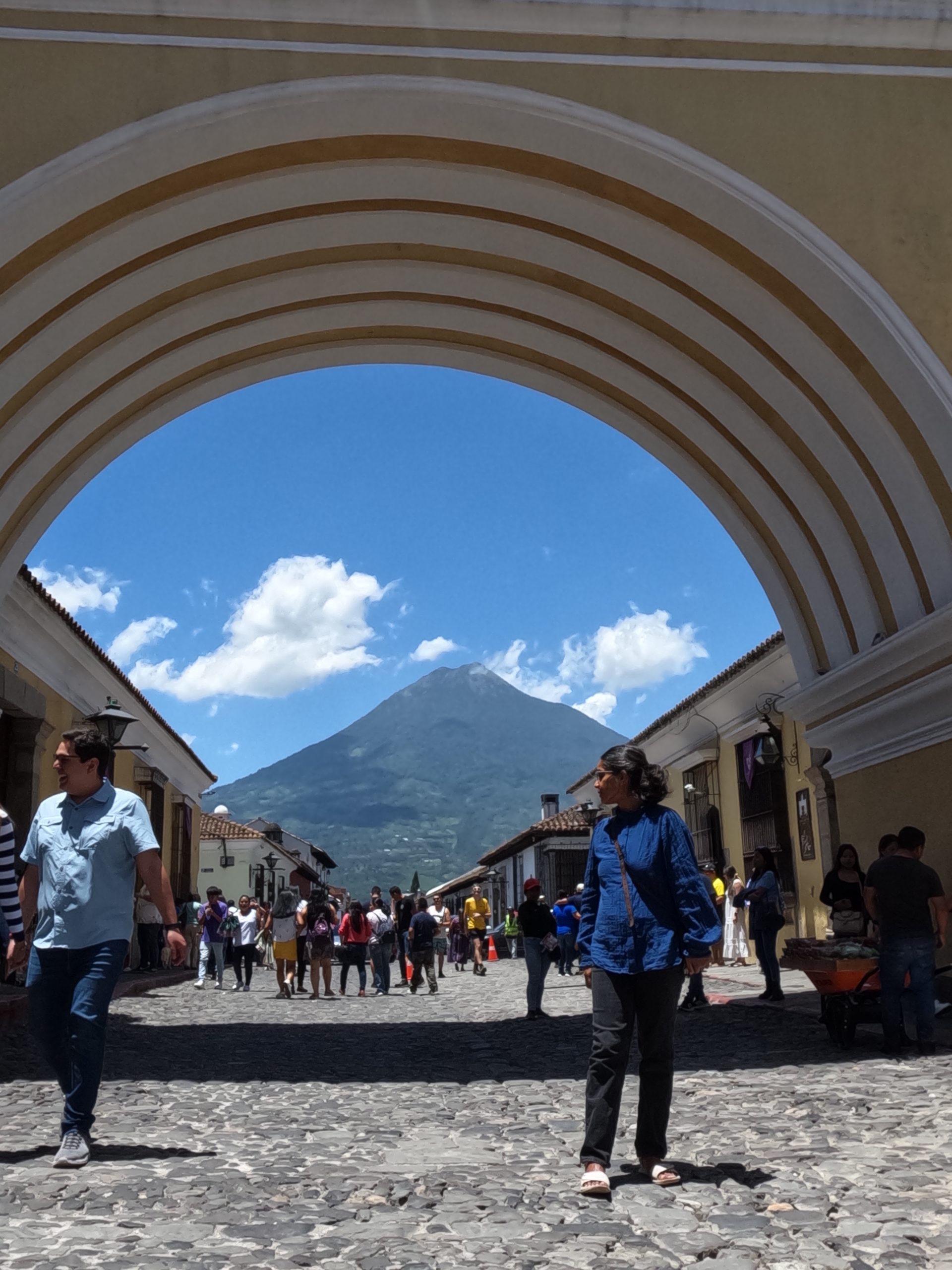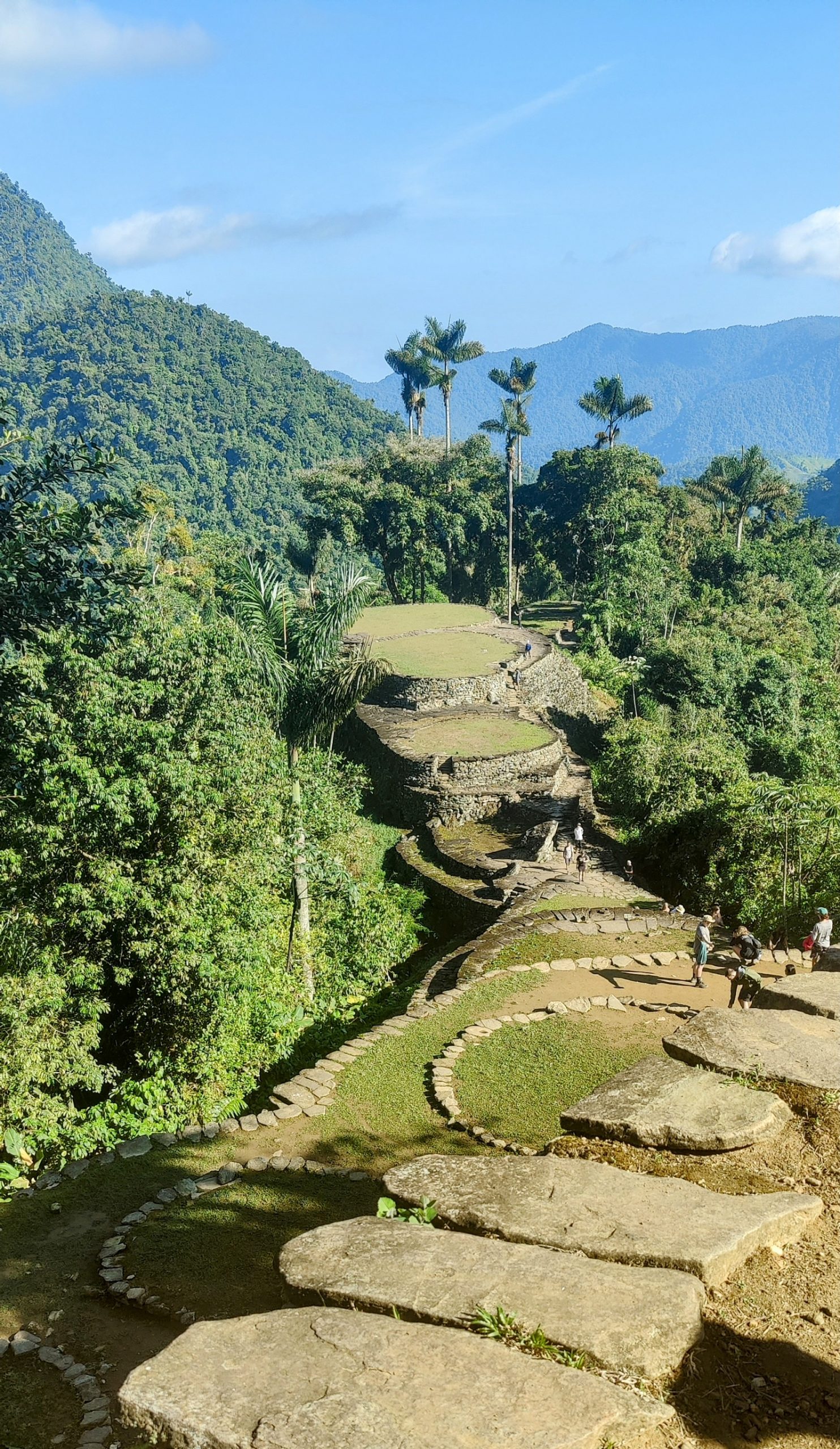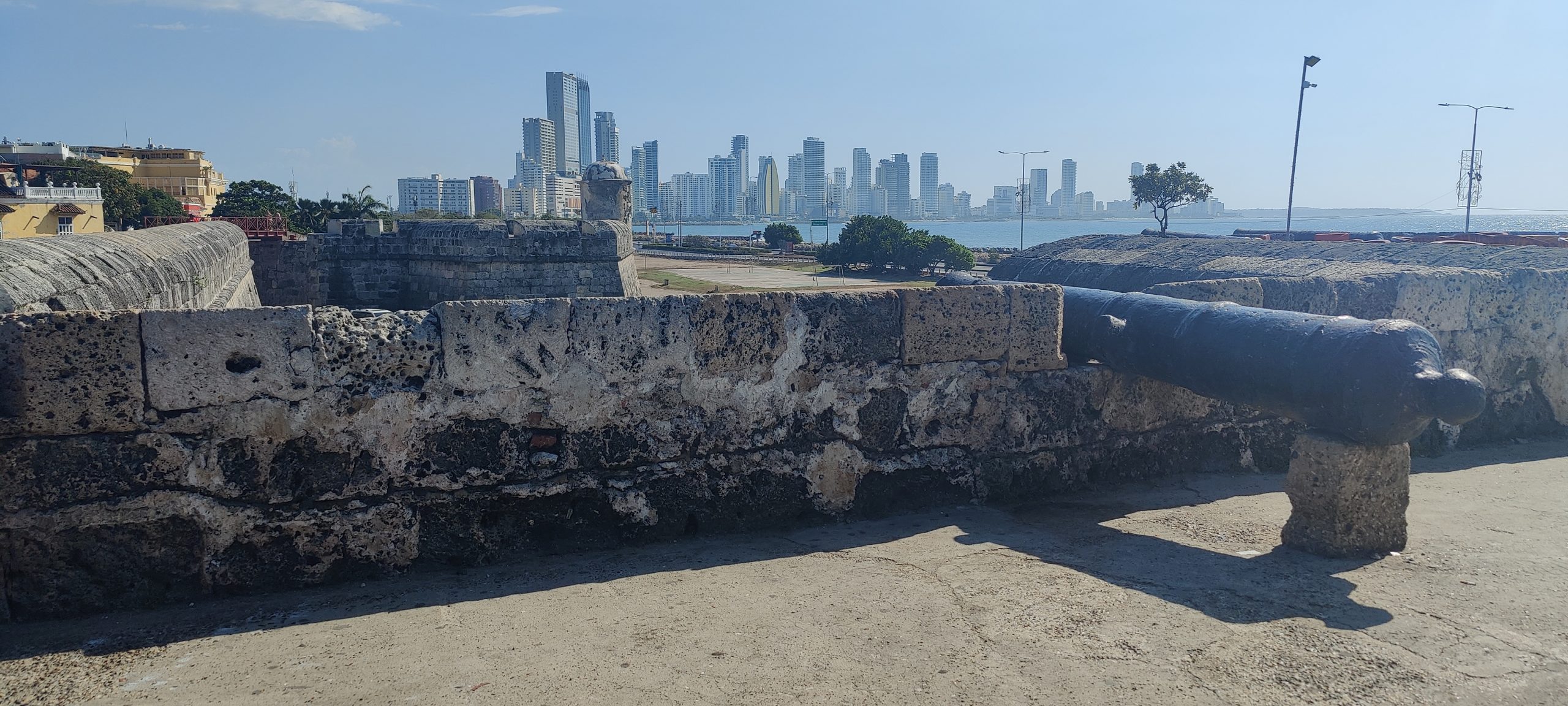Three weeks ago, we bid farewell to Anton as he embarked on a journey back home from Guatemala City to start his university education in computer science, just like his father. We decided to go with him to the airport in Guatemala City and make one last trip with Anton before he literally flew away from the nest. We spent 3 days in the enchanting Antigua, the former capital of Guatemala, now recognized as a UNESCO World Heritage site.
The urban plan and architecture in Antigua
Under Spanish rule since the 15th century, Antigua served as the capital of a vast region encompassing nearly all of Central America. Its meticulously designed cobblestone streets form a grid layout with north-south and east-west facing streets, influenced by the Italian Renaissance. This layout remains one of the finest examples of Latin American urban planning and is the sole survivor of the city’s 16th-century layout.
Antigua stands as one of the earliest and most remarkable examples of urban planning in Latin America, preserving its original grid plan from 1543. The religious, private, and public buildings scattered across the city serve as unparalleled evidence of Spanish colonial architecture in Antigua.
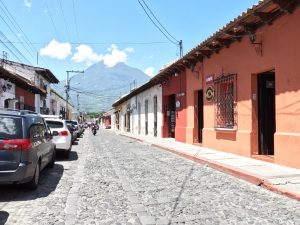
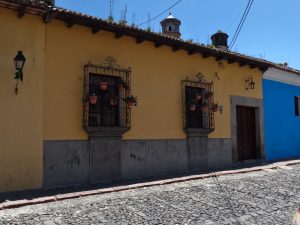
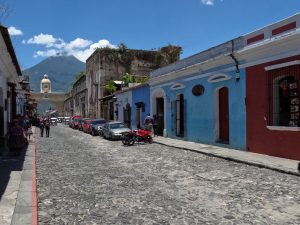
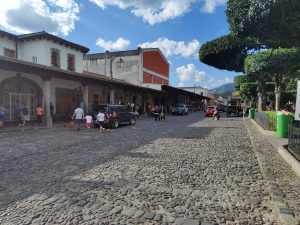
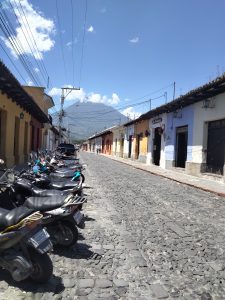
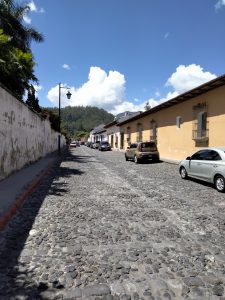
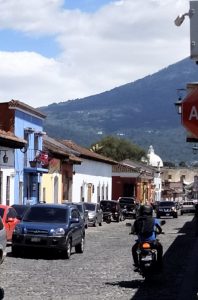
History
Antigua’s history has been marked by both natural and human-made catastrophes, including fires resulting from indigenous uprisings, earthquakes, volcanic activity from the nearby “Volcán de Agua” (Water Volcano), landslides, and flooding. The oldest structures still standing in the city date back to the 17th and 18th centuries, showcasing colonial architecture unique to the Americas. Following a devastating earthquake in 1773, the capital was ultimately relocated to Guatemala City, where it remains today.
Antigua today
Today, Antigua is characterized by being a highly popular tourist destination with brand-name shops, souvenir stores, hotels, and restaurants. We arrived in Antigua in the evening after a long taxi ride through Guatemala’s breathtaking mountain landscape. During the journey, the climate changed from the very humid heat of Río Dulce to a cooler temperature up in the mountains.
Welcomed by danish vibes
Tired from the long taxi ride, we went into the city to find something to eat. Martin had done some research and found a vegetarian restaurant with good reviews located in a courtyard with many other restaurants. There were plenty of good and affordable restaurants to choose from, many of them focused on vegetarian food. Even in the ordinary restaurants and cafes you could choose a vegetarian alternative in the menu. Entering the courtyard, we spotted a restaurant decorated with a Danish flag called “SKÅL.” The menu offered traditional Danish food, including the traditional danish open-sandwiches “Smørrebrød” with homemade rye bread and remoulade. We set the vegetarian restaurant aside for another day and tried the danish food. The owner was Danish and had started the restaurant three years ago, which turned out to be a great idea. Apparently, many Danes visit Antigua.
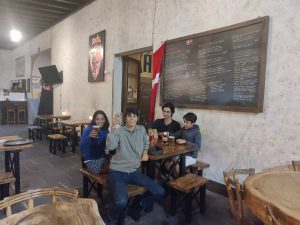
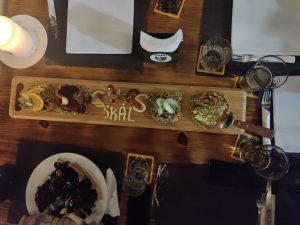

Tour of the city
The next morning, we had breakfast on the hotel’s rooftop terrace overlooking the “Volcán de Agua” (Water Volcano).
We walked through the city which in spite of the traffic, is very walkable. All the streets are oneway streets in different directions making it cumbersome to drive. Nevertheless the streets were filled with cars. At daytime we could really sense the atmosphere of the city. Strolling down the streets in temperatures of around 20-25 degree celcius, we enjoyed the cool mountain air and being able to wear long trousers and long sleeve shirts. The cobblestone streets resembled a pedestrian street in a European city. Low buildings with one or two-story townhouses interrupted by occasional tall buildings, ruins of churches, monasteries and other significant colonial-era structures. Elliott felt like being in the old Medieval Town of Copenhagen and suddenly became homesick.
Antigua is a charming city to explore. It offered brand-name shops with trekking gear, specialty stores with Guatemalan chocolate and coffee, and shops with local handicrafts like traditional Guatemalan clothing woven in various patterns and colors. The city has a wide variety of restaurants to offer. It seemed like the tourist businesses had taken over the city with shops addressed to tourists and restaurants and hotels everywhere.
We visited Casa Santo Domingo, which is a hotel located on an old Augustinian Convent. Due to it’s historical significance the hotel courtyard is open to public, leading to a museum. The restoration is very true to the colonial architecture. We had some very nice views of the surrounding volcanoes in the beautiful courtyard.
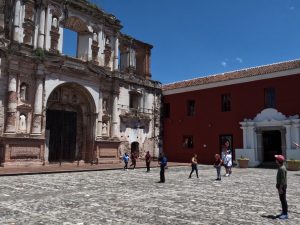
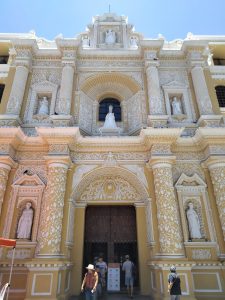
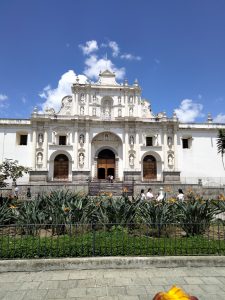
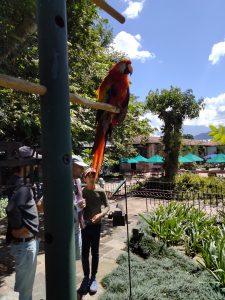
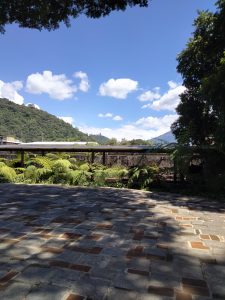
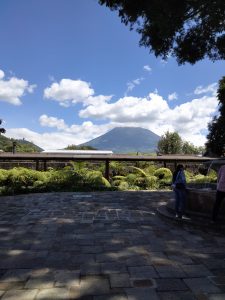
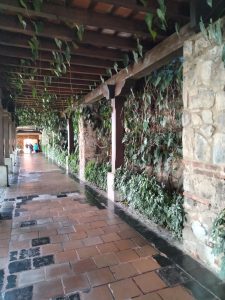
At a local chocolate store Martin got to taste a cocoa bean. Expecting a sweet chocolate flavor, the sour taste of the cocoa bean took him by surprise. How about that adventure.
The Market
Close by our hotel was Plaza Mayor, the Central Park, which also function as a market place with packed stalls of local crafts, used books, clothing and jewelry, as well as roasted nuts, ice cream and everything else that belongs to an outdoor market. Traditional music and the crowd enhanced the local experience, although polished and very touristy.
On the last day in Antigua, we went on a hike to the nearby Acatenango volcano. Read about how we managed it in the next blog post.
